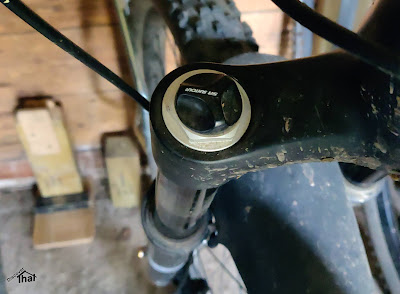At long last, I have got together all the other bits, and fitted them, to upgrade the stereo.
Bigger speakers, a sub-woofer and a Raptor console dash.
Getting the old radio mount and cable trim out is more difficult than fitting the new console.
I managed to knock the top mount sideways just far enough to reveal the screws holding the lower trim in place.
With the lower trim out of the way, it was possible to bend and pull the old radio mount until it came out. Not very elegant but the alternative was to take most of the dash apart!
Fitting the Raptor dash, was as easy as they say. It fits so well that the two bolts at the top are sufficient to hold it securely in place.
Defenders do not have much space to route cables. Deciding the route took longer than threading the cables. The lower lip of the Raptor dash gave me the opportunity to hide the cable between the foam of the dash trim and the metal under it. I just forced a screwdriver down to make the space. The fuse box cover hides the drop down to where it goes under the rubber matting past the gear sticks.
My home made switch panel for the heated seats hides where the cable goes under the centre console between the seats.
I had very few switches to fit in the console but I didn't want to waste the space. I, therefore, deliberately ordered a Raptor console dash with two DIN radio mounting holes. There is not enough space behind to fit two stereos but I had plans to use the lower one for a cubbyhole.
My own two part cable gland in the same style as the switch I was fitting.
The new speakers are larger. They need a deeper spacer and offset mounting holes. The prototype was evenly spaced but I soon changed that to an angled version.
The new speakers are Pioneer TS-R1350S 13cm full range 3-way speakers. They have two sets of fixing holes, at 120mm and 137mm diameter. The spacer, that I designed, has holes at 117mm to fix the adaptor to the dash and holes at 137mm to secure the speaker and the grill to the spacer.
The 5" speakers fitted where the Land Rover 4" ones were.
I needed a bit of trim round the head unit to hide the bracket.
The head unit is a Sony XAV-AX100. It has a double DIN screen but only a single DIN component housing sticking out the back. This makes it ideal for a Defender where there is limited space in the dash area. The Sony is one of the few I could find, a couple of years ago, where the DIN part was at the top and the screen overlapped the bottom and also supported ApplePlay for Shelley's iPhone.
The sub-woofer had to be fairly small as there is next to no space in a pickup Defender cab. Sub-woofers, by their very nature, tend to be large! The Pioneer TS-WX130EA does the job in a relative small housing.
I usually favour more positive mounting. Ideally, a nut and bolt, however, the bulkhead behind the drivers seat is just in front of the fuel filler pipe. It looked a little trickier than it was worth to fit brackets. The sub-woofer sits on the floor and the seat back is very close, so the Velcro does not need to take any weight.
I do like my cables well protected and tidy.
Much nicer looking dash, in my opinion.
Music sounds so much better.
==















































